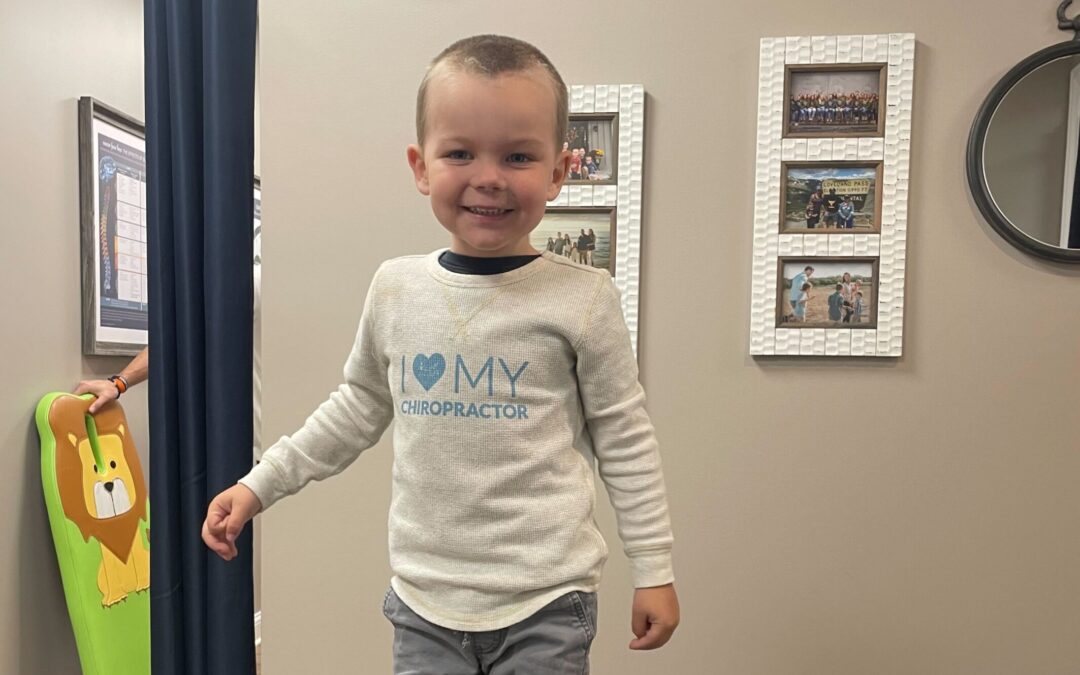Have you ever stopped to think about how something as simple as getting into a car, going on a swing, or getting on an airplane can make you feel sick? For most people, it’s a temporary feeling that soon fades away, but for those with Cyclic Vomiting Syndrome (CVS), these seemingly everyday activities can be a real challenge.
Imagine being a kid, and every time you get into a car or go on a swing, your nervous and digestive systems become disrupted. You constantly feel nauseous and may even vomit. This is the reality for those with Cyclic Vomiting Syndrome, a condition that can cause severe and recurrent episodes of vomiting.
The Power of Our Nervous System and Vagus Nerve
Let’s start by discussing the Vagus Nerve. You may have heard about it in connection with hundreds of different conditions. Its primary job is to regulate digestive motility and function. When activated, it stimulates digestion and calms the heart rate and breathing, earning it the nickname the “rest and digest” nerve. However, we know that the vagus nerve and brain-gut connection are a two-way street. The brain and central nervous system, also known as the autonomic nervous system, are the boss over the gut and immune system.
It’s important to understand the connection between the nervous system and our gut and the immune or inflammatory system. The nervous system acts as the boss of these systems, with the vagus nerve serving as the connection between them. We now know that the vagus nerve also regulates inflammation.
Interference or bad connection between the brain, the central nervous system, and the gut can lead to decreased motility, resulting in reflux, upset stomach, constipation, and even Cyclic Vomiting Syndrome in extreme cases.
The first thing that happens when the vagus nerve is subluxated or interfered with is decreased motility. The second thing is that it allows inflammation to run free. Too much inflammation in the gut can spill over and affect the immune system, making a child more prone to sickness. It can also impact the nervous system, leading to behavior challenges and sensory issues.
The good news is that for many children, the problem is isolated to digestive motility, and we can help in a drug-free, natural way through pediatric chiropractic care. But it’s important to understand that stress is at the root of the problem. Parents may have already tried removing gluten and dairy from their child’s diet, adding probiotics, and removing toxins from their environment. However, the child may still be struggling with nausea and vomiting.
The Three Ts – Trauma, Toxins, and Thoughts
Understanding the three types of stress (the three Ts – Trauma, Toxins, and Thoughts) can help us address the root of the problem. Most families come into our practice already dominating the second T, which is removing toxins that can be found in food, the environment, and even medications. But their child is still struggling with nausea and vomiting.
So what gives? Two other kinds of stress have either happened in the past (trauma), leaving your child’s nervous system stuck in a state of subluxation and distress mode or are still happening presently (thoughts), continuing the stress pile up. One of the most significant missing links to vagus nerve challenges that we see all the time is birth trauma.
See, as mentioned, the vagus nerve is a crucial component of our nervous system, responsible for regulating a wide range of bodily functions such as digestion and inflammation. This nerve, which branches from the top of the neck and the brainstem, is often referred to as the “wandering nerve” due to its extensive reach throughout the body.
To effectively perform its duties, the vagus nerve must have unimpeded functionality all the way down through the neck and thorax, with its many “little wires and satellites” extending into the gut and reporting back to the brain on the state of affairs. For optimal performance, the signals traveling down and up the nerve must be free and clear, enabling the vagus nerve to perform its essential role in maintaining bodily balance and well-being.
Subluxation can occur due to physical stress and strain on the neck and thoracic spine during delivery. Common delivery procedures such as C-sections, forceps, vacuum, and induction can cause this type of stress.
When subluxation is present along the path where the vagus nerve needs to do its job, it can negatively impact digestive motility and the nervous system’s ability to regulate inflammation.
Subluxation also shifts the nervous system over to the sympathetic dominant state, which is the state we’re in when we’re in fight or flight mode. In this state, digestive motility is decreased, and inflammation is increased. This can lead to a range of health problems for your child.
When stress occurs up top, it causes subluxation, which can lead to sympathetic dominance. When a child experiences this type of stress early on, such as during the birth process, it can overwhelm their nervous system and lead to anxiety and worry. This is why we refer to all of this in a neurological way as the Perfect Storm.
This type of stress can also cause other health issues, such as vagus nerve challenges, Cyclic Vomiting Syndrome, and constipation. These issues don’t stay in the gut but also impact the brain and cause anxiety, worry, and concentration challenges. It’s heartbreaking to see children struggling with these challenges, which is why it’s important to identify if subluxation or nervous system overstress is at play.
Chiropractic and Our PX Docs Network Can Help
To determine if your child has subluxation, you need to get connected with a PX Doc in our network who can perform neurological INSiGHT scans. These scans are simply a stress test for your child’s nervous system and can provide valuable information such as whether or not they are subluxated, how much and where that subluxation is, and what can be done to help them.
Through drug-free pediatric chiropractic care, we can help to reduce inflammation and boost digestive motility to get your child out of that fight or flight stress storm. Our goal is not to treat or cure but rather to find the stress on the nervous system and make safe, gentle, and easy adjustments to alleviate it.
Please check our article on Cyclic Vomiting Syndrome to learn more about its connection to the vagus nerve and brain-gut communication. Although the discussion may get technical, it offers drug-free solutions that could greatly benefit your child’s health.
You can also find inspiring stories on our website, like that of Little Miss Maddie, who overcame her struggles with Cyclic Vomiting Syndrome thanks to Neurologically-Focused Chiropractic care. We want the same positive outcome for your child, so please browse our directory, give us a call, or leave a comment below with any questions. We want the best for not only your child but your entire family.





